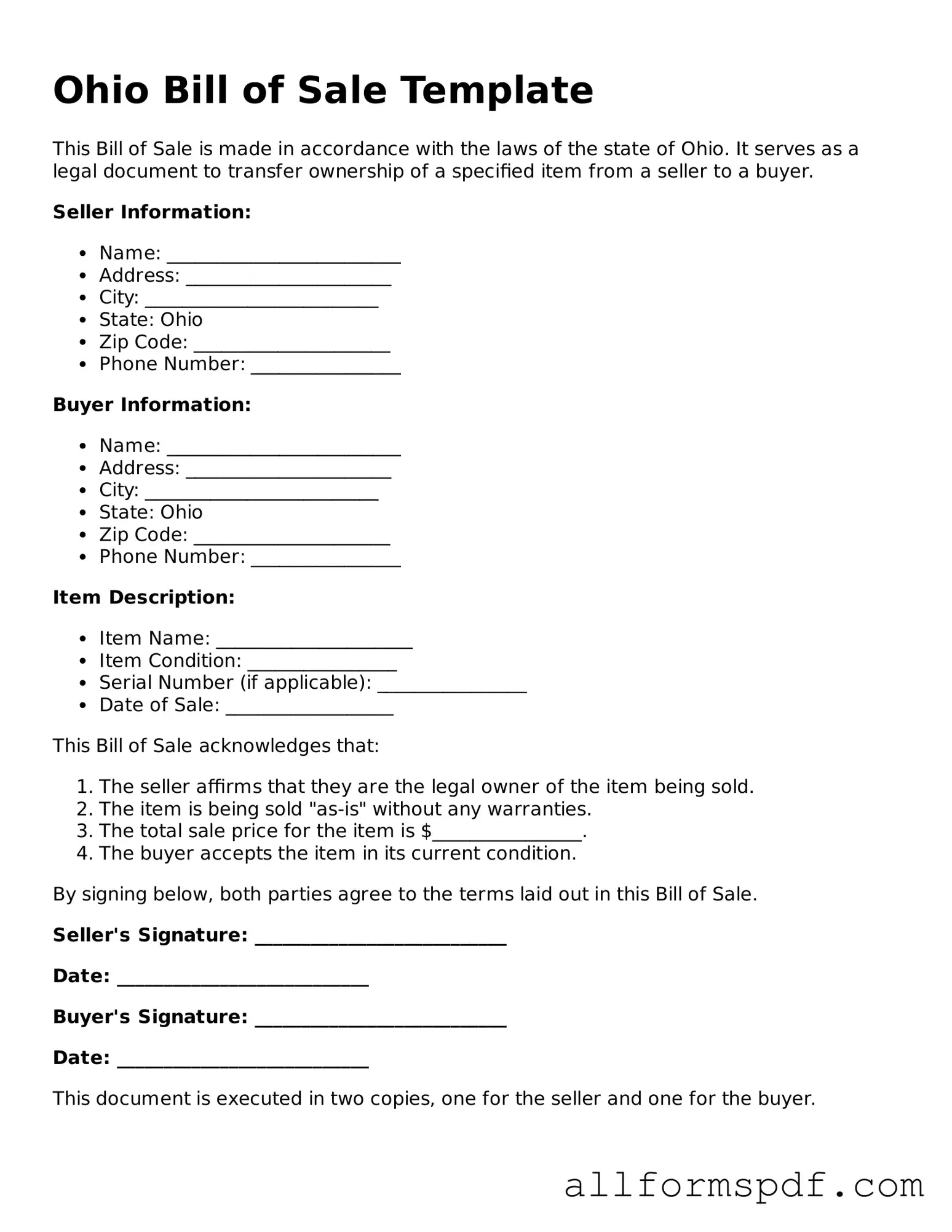Filling out the Ohio Bill of Sale form can seem straightforward, but many people stumble over common mistakes that can lead to complications down the road. Understanding these pitfalls can help ensure that your transaction goes smoothly and that you have a valid record of the sale.
One frequent error is failing to provide complete information. The form requires specific details about both the buyer and the seller, including names, addresses, and contact information. Omitting any of this information can lead to confusion or disputes later on. It's crucial to double-check that every field is filled out accurately before submitting the form.
Another common mistake is not including a description of the item being sold. Whether it’s a vehicle, a piece of equipment, or any other item, a detailed description is essential. This should include the make, model, year, and any identifying numbers like VINs for vehicles. A vague description can make it difficult to prove ownership or the specifics of what was sold.
Many individuals also overlook the importance of signatures. Both the buyer and the seller must sign the Bill of Sale for it to be legally binding. Forgetting to obtain a signature from one party can render the document invalid. It’s a simple step, but one that is often missed in the rush to complete the transaction.
Additionally, neglecting to date the form can lead to issues. The date of the sale is crucial for establishing ownership and for any future legal matters. Without a date, there may be confusion about when the transaction took place, which can complicate things if disputes arise later.
Another mistake that can occur is not keeping copies of the Bill of Sale. Once the form is completed and signed, it’s important for both parties to retain a copy. This document serves as proof of the transaction and can be essential for future reference, especially if there are any questions about the sale.
Lastly, some people may assume that the Bill of Sale is sufficient for all legal requirements. While it is an important document, there may be additional steps needed depending on the type of sale. For instance, transferring vehicle ownership may require additional paperwork with the Ohio Bureau of Motor Vehicles. Always check to ensure that all necessary steps are completed to avoid future complications.
